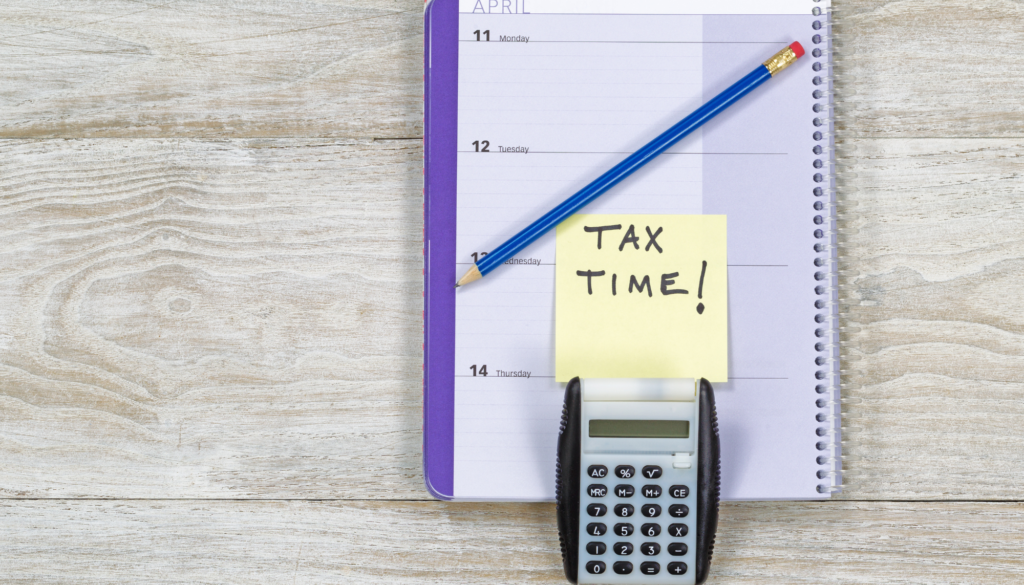6 Ways to Get a Jump Start on Tax Season

Tax season is still a few months off, but it will be here before we know it, and it’s never too soon to get a jump on your taxes. Remember, the sooner your file, the sooner you’ll get your refund.
A few simple steps now can ensure a smooth tax season with no unpleasant surprises. We’ve rounded up 6 things you can do now so that you’re ready to file as soon as possible in the new year. Before we get to them, though, let’s first have a look at some of the biggest tax changes for this year:
What’s New in 2022
1099-K Forms
More taxpayers will be receiving 1099-K forms. Check forms carefully to ensure that personal transactions are not included as taxable income.
Charitable Deduction Change
During 2021 as part of the CARES Act, taxpayers were temporarily allowed to deduct up to $300 filing individually or $600 filing jointly in charitable donations even if they were taking a standard deduction. In 2022, however, that rule no longer applies.
Expanded Premium Tax Credit
In 2022, more people are eligible for the premium tax credit, which helps individuals and families cover the premiums for health insurance purchased through the Health Insurance Marketplace. The credit is temporarily expanded for tax years 2021 and 2022. See here for eligibility requirements.
Some Reduced Tax Credits
Some tax credits, including the Child Tax Credit (CTC), the Earned Income Tax Credit (EITC), and the Dependent Care Credit will revert to pre-COVID levels. Taxpayers claiming those credits will in many cases see a reduced refund.
Clean Energy Vehicle Eligibility
The eligibility rules for claiming a tax credit for clean energy vehicles have changed. As of August 16, only vehicles meeting the final assembly in North America rule will be eligible for a tax credit.
6 Steps to Make Filing Your Taxes Easier in 2023
1. Create a system
Starting in January, you’ll start receiving tax forms from various organizations, including your employer, mortgage lender, bank, and any charitable organizations you donated to this year. Keeping these organized and secure will streamline your filing and help ensure accuracy.
Since you will most likely get a mix of paper and electronic records, the easiest thing to do is create an e-folder for your computer and a physical file for paper records. Simply file documents in each as you receive them, and they’ll be there when you’re ready to start your return.
2. Tally up income
If you haven’t kept good records over the course of the year, now is the time to go back and make sure you know exactly how much you earned so that you can report it correctly.
Remember that most income is taxable, including unemployment income, digital assets (cryptocurrency), interest, money from side hustles and part-time jobs, and some social security benefits. You’re responsible for reporting and paying taxes on income even if you don’t receive a tax form for it.
3. Track expenses
Potentially deductible expenses include charitable donations, retirement contributions, education expenses, state, local, and real estate taxes, childcare, health insurance, medical expenses, mortgage interest, and property tax. Track expenses on a spreadsheet, and add any receipts to your tax files.
For the 2022 tax year, the standard deduction for single taxpayers is $12,950; for married couples filing jointly, it is $25,900. If your expenses exceed those amounts, itemizing your deductions may give you a bigger write-off. A Tonneson CPA can help you figure out exactly what you can deduct and whether you should itemize or take a standard deduction.
4. Update name and address changes
If you’ve moved to a new address or legally changed your name, make sure to notify your employer and anyone else who might need to send you a tax form in January. Also, be sure to update the IRS of any address changes and the Social Security Administration of a legal name change.
5. Create an online IRS account
An online IRS account allows you to see what you owe, make payments, access your tax records, and create and manage payment plans.
6. Max out your contributions
You can reduce your taxable income by contributing to some retirement and health savings accounts. You have until April 18, 2023, to make up to the maximum contributions to your IRAs for 2022, and until December 31, 2022, to max out contributions to your 401(k).
Make an Appointment with a Tonneson + Co CPA
A Tonneson + Co CPA can advise you on the specific deductions and credits you’re eligible for and help you file a complete and accurate return so you can get the maximum refund you’re entitled to.
But tax season gets busy for us! It’s not too soon to make an appointment in the new year to talk to one of our tax experts. Contact us today!
Let's Talk
If you’re interested in working with Tonneson + Co, please reach out to us. We look forward to hearing from you!
"*" indicates required fields
